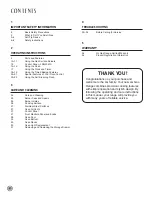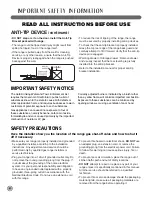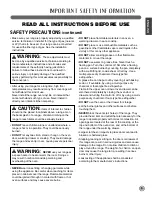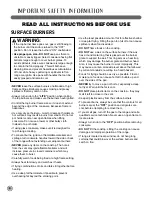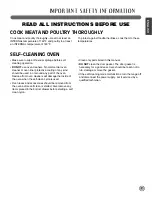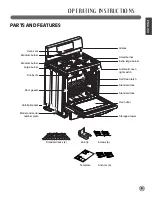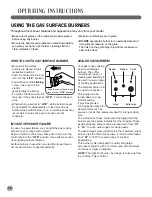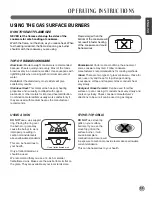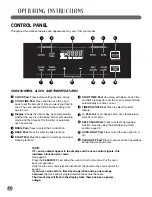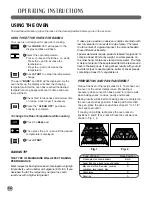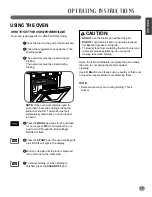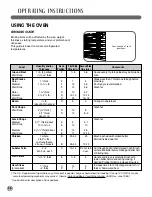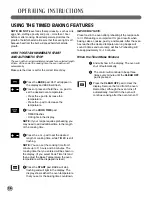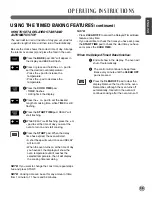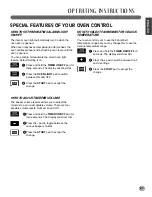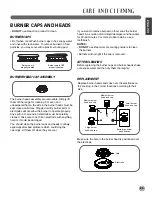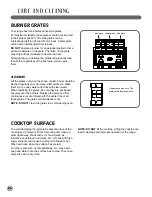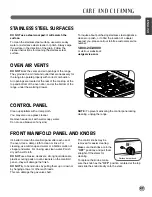
14
O P E R AT I N G I N S T R U C T I O N S
USING THE OVEN
To avoid possible burns, place the racks in the desired position before you turn the oven on.
PREHEATING AND PAN PLACEMENT
Preheat the oven if the recipe calls for it. To preheat, set
the oven at the correct temperature. Preheating is
necessary when convection baking and for good results
when baking cakes, cookies, pastry and breads.
Baking results will be better if baking pans are centered in
the oven as much as possible. If baking with more than
one pan, place the pans so each has at least 1” to 1-1/2”
of air space around it.
If cooking on multiple racks,place the oven racks in
positions C and E (For 2 racks) Place the cookware as
shown in Fig. 1, 2.
HOW TO SET THE OVEN FOR BAKING
Your oven is not designed for open-door cooking.
Press
BAKE.
350° will appear in the
display and bake will flash.
Select the oven temperature.
Press or press and hold the
+
or
-
pads.
• Press the + pad to increase the
temperature.
• Press the - pad to decrease the
temperature.
Press
START
to accept the temperature
change
The word
“BAKE”
and
100°
will be displayed. As the
oven heats up, the display will show the changing
temperature. After the oven has reached the desired
temperature, long beeps will sound 5 times and oven
lamp will flash.
Check food for doneness at minimum time
on recipe. Cook longer if necessary.
Press the
“CLEAR OFF”
pad when
cooking is complete.
To change the Bake Temperature while cooking
Press the
Bake
pad.
Then press the
+
or
-
pad until the desired
temperature is displayed.
Press
START.
Type of Food
Rack Position
Frozen pies (on cookie sheet)
Angel food cake, bundt or pound cakes
Biscuits, muffins, brownies, cookies,
cupcakes, layer cakes, pies
Casseroles
Roasting
B or C
C
D
D
A
BAKING TIP
THE TYPE OF MARGARINE WILL AFFECT BAKING
PERFORMANCE
Most recipes for baking have been developed using high
fat products such as butter or margarine (80% fat). If you
decrease the fat, the recipe may not give the same
results as with a higher fat product.
If cakes, pies, pastries, cookies or candies are made with
low fat spreads, it can result in recipe failure. The lower
the fat content of a spread product, the more noticeable
these differences become.
Federal standards require products labeled “margarine” to
contain at least 80% fat by weight. Low fat spreads, on
the other hand, contain less fat and more water. The high
moisture content of these spreads affects the texture and
flavor of baked goods. It can get best results with your old
favorite recipes to use margarine, butter or stick spreads
containing at least 70% vegetable oil.
Fig. 1
Fig. 2


